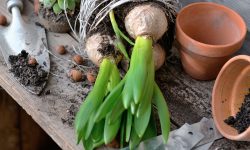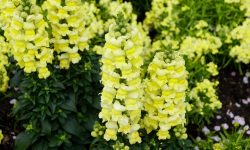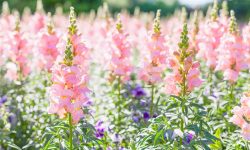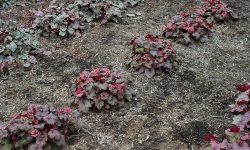Zinnias are beloved for their vibrant blooms, long flowering season, and easy-to-grow nature. Found in gardens across the world, these colorful flowers brighten up flower beds, borders, and containers. One of the most common questions among gardeners is whether zinnias are annuals or perennials. Understanding their life cycle helps determine how to care for them and whether they can return year after year.
Zinnias belong to the Asteraceae family and are native to Mexico and Central America. They thrive in warm, sunny environments and are well known for their resilience and fast-growing qualities. Depending on the climate and care, zinnias can act like either annuals or tender perennials, but they are typically grown as annuals.
Understanding the Nature of Zinnias
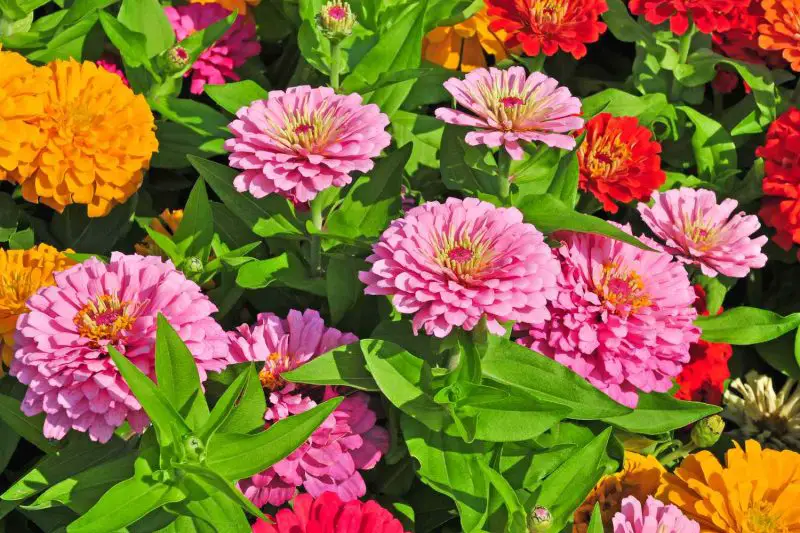
What Makes a Plant Annual or Perennial?
The distinction between annuals and perennials lies in their lifecycle. Annual plants complete their entire life journey—from germination to seed production—within a single growing season. After setting seed, they naturally die, requiring replanting the next year. These plants prioritize rapid growth and reproduction, which often results in vibrant, long-lasting blooms during their short lifespan.
Perennials, in contrast, establish more slowly but are built for longevity. They survive for multiple years, often going dormant in winter and regenerating from the same root system each spring. Their flowers may not be as continuously showy as annuals, but they offer long-term value in the garden.
Zinnias, especially Zinnia elegans, fall into the annual category because they cannot tolerate frost and die with the arrival of cold temperatures. Despite this, in frost-free zones or under controlled indoor conditions, they may survive longer than one season. Some zinnias can also self-seed, giving the illusion of perennial behavior as new plants emerge each year without additional planting effort.
The Zinnia Lifecycle Explained
Understanding how zinnias grow helps gardeners make the most of their vibrant blooms. Zinnia seeds germinate quickly—typically in 5 to 10 days—when planted in warm, moist soil. From there, the plants grow vigorously, developing strong stems and foliage in just a few weeks. Flower buds begin forming within 6 to 8 weeks, and with proper care, blooming continues throughout the summer and into fall.
As the blooms age and dry out, they begin producing seeds. Left untrimmed, these seeds drop to the ground and may germinate the following year, especially in climates without hard frost. This rapid cycle makes zinnias one of the most rewarding annual flowers for beginner and experienced gardeners alike.
Their lifecycle is also why zinnias are excellent for cut flower production. The more you harvest blooms or deadhead spent flowers, the more the plant invests energy in creating new ones rather than going to seed early.
Are There Any Perennial Zinnia Varieties?
While the vast majority of garden zinnias are annuals, there are exceptions worth noting. One such plant is Zinnia grandiflora, commonly referred to as prairie zinnia. This lesser-known species behaves as a true perennial, especially in arid and semi-arid regions of the southwestern United States.
Zinnia grandiflora thrives in dry, rocky environments and is well adapted to USDA zones 5 through 9. Unlike the showy blooms of Zinnia elegans, prairie zinnia produces smaller, daisy-like yellow flowers that bloom throughout the summer and into fall. It is extremely drought-tolerant and ideal for xeriscaping or native pollinator gardens.
However, even with this species, longevity depends on climate. In areas with wet winters or poor drainage, perennial zinnias may not survive. In most garden settings outside its native range, prairie zinnia is still relatively rare and often used more for ecological restoration than ornamental gardening.
For those seeking perennial-like performance from annual zinnias, choosing varieties that readily reseed or extending the bloom season through succession planting can provide a similar effect without the need for overwintering.
Growing Zinnias as Annuals
Starting Zinnias From Seed
Zinnias are one of the easiest annuals to grow from seed, making them a favorite for both novice and experienced gardeners. For best results, sow the seeds directly into warm garden soil after the final frost date in spring. Zinnia seeds require warmth to germinate and won’t tolerate cold, wet soil. Space seeds about 6 to 12 inches apart depending on the variety, and cover them lightly with soil.
In colder climates or short growing seasons, you can get a head start by sowing seeds indoors 4 to 6 weeks before the last expected frost. Use biodegradable pots to reduce transplant shock, as zinnias dislike root disturbance. Keep the seedlings under grow lights or near a sunny window, and harden them off gradually before transplanting them into the garden once night temperatures stay above 50°F (10°C).
Zinnias germinate quickly—usually within 5 to 7 days—so you’ll see signs of life soon after planting.
Ideal Soil and Light Conditions
Zinnias perform best in locations that receive full sun for at least 6 to 8 hours a day. Sunlight encourages vigorous growth and more prolific blooms. Partial shade may reduce flowering and make the plants more susceptible to disease.
Soil quality plays a vital role in the success of your zinnias. These plants prefer loose, fertile, and well-draining soil. While they can tolerate average garden soil, they thrive when enriched with organic matter like aged compost or well-rotted manure. A slightly acidic to neutral soil pH between 5.5 and 7.5 is ideal. Before planting, test your soil and amend it if necessary to improve drainage or adjust pH.
To enhance air circulation and reduce the risk of fungal diseases like powdery mildew, avoid overcrowding the plants.
Watering and Feeding Tips
Zinnias need consistent moisture to establish strong roots and produce vibrant flowers, especially during the first few weeks after planting. Once established, they are somewhat drought-tolerant but still benefit from regular watering during hot and dry periods.
Water deeply at the base of the plant rather than overhead to minimize the risk of fungal issues. Morning watering is best as it allows leaves to dry out during the day. During periods of rainfall, reduce watering to avoid soggy soil.
For feeding, use a balanced, all-purpose fertilizer (such as 10-10-10) once a month throughout the growing season. Alternatively, you can side-dress the plants with compost or a slow-release organic fertilizer early in the season. Be careful not to over-fertilize, as excessive nitrogen can lead to lush foliage with fewer blooms. Proper watering combined with moderate feeding ensures healthy plants with continuous and colorful flowering.
Extending the Life of Your Zinnias
Deadheading for More Blooms
Deadheading—removing spent or faded blooms—is one of the easiest ways to keep your zinnias flowering longer. When old flowers are left on the plant, zinnias begin putting energy into seed production rather than producing new buds. By regularly snipping off faded flowers just above a set of healthy leaves or side shoots, you signal the plant to continue blooming. This not only extends the flowering season but also keeps the plant looking vibrant and tidy in the garden. Deadheading once or twice a week during peak bloom ensures a steady flush of color all summer.
Pinching and Pruning for Bushier Plants
To create zinnias that are fuller and produce more flowers, pinching is key—especially early in their growth. When young plants reach about 6 inches tall and have developed several sets of true leaves, pinch off the very top of the central growing stem. This encourages the plant to send out side shoots, resulting in more stems and more blooms. You can also prune any leggy or weak growth throughout the season to redirect the plant’s energy toward stronger, bushier growth. For taller varieties, light pruning can prevent flopping and help maintain a more compact and manageable shape.
How to Save Seeds for the Next Season
Saving zinnia seeds is a simple and rewarding process that allows you to grow the same vibrant blooms year after year. Choose a few of your healthiest, most colorful flowers to leave on the plant until they turn brown and dry out completely. As the petals fall away and the center of the flower becomes dry and papery, you’ll see small arrowhead-shaped seeds forming. Cut off these seed heads and let them dry for a few more days in a well-ventilated spot. Then gently break them apart and separate the seeds from any remaining chaff. Store your seeds in a paper envelope or airtight container, labeled with the variety and year. Keep them in a cool, dry location until it’s time to plant in spring. Properly stored zinnia seeds can remain viable for up to five years.
Climate Considerations for Growing Zinnias
Zinnias in Cold Climates
In USDA Zones 3 to 6, zinnias must be treated as true annuals due to their extreme sensitivity to frost. The growing window in these regions is relatively short, so careful timing is crucial for success. Start seeds indoors about 4 to 6 weeks before the last expected frost date, using seed trays or small pots with seed-starting mix. Provide warmth and bright light—either from a sunny windowsill or grow lights—to ensure strong seedlings.
Once nighttime temperatures consistently stay above 50°F (10°C), transplant zinnias outdoors into well-prepared beds. It’s best to harden them off by gradually exposing them to outdoor conditions over 7 to 10 days. To offer extra warmth and protection in early spring, especially in mountainous or northern areas, row covers or cloches can be used during the seedling stage.
Zinnias in cold climates will generally bloom from early summer until the first hard frost. As autumn approaches, keep an eye on weather forecasts and harvest mature seeds before frost damage. Be sure to clear away plant debris at the end of the season to minimize overwintering pests and disease spores in the soil.
Zinnias in Warm and Mild Climates
Gardeners in Zones 7 to 10 benefit from longer growing seasons, often stretching from mid-spring into late fall. This extended period allows for succession planting every few weeks to ensure continuous blooms and a constantly refreshed flower bed. In these zones, zinnias can be direct-sown outdoors as early as late March to early April, depending on local frost dates.
Because temperatures stay mild, zinnias may remain in bloom for months if properly cared for. Deadheading is especially important in these climates to prevent premature seed setting and to keep the plants producing new flowers. During dry spells or heat waves, consistent deep watering is necessary to prevent stress, especially for larger varieties like ‘Benary’s Giant’ that are more prone to wilting.
In milder winters (Zone 9–10), some zinnias may reseed naturally, popping up again the following spring. However, they’re still considered annuals because the original plant will die back after its lifecycle is complete.
Zinnias in Tropical and Subtropical Zones
In Zones 10 to 13—common in parts of southern Florida, Hawaii, and Puerto Rico—zinnias thrive in the warmth and sunlight nearly year-round. In these areas, gardeners can enjoy up to 10 months of blooming with minimal interruption. However, high humidity and heavy seasonal rains, especially during the summer monsoon, can make zinnias more vulnerable to fungal diseases like powdery mildew or botrytis.
To combat this, choose disease-resistant varieties such as those from the ‘Profusion’ or ‘Zahara’ series. These hybrids are specifically bred to handle humid conditions and resist mildew, making them ideal for tropical climates. Proper spacing is essential to allow airflow, and it’s wise to avoid overhead watering to reduce moisture on foliage.
Zinnias planted during the dry season—from fall through spring—usually perform better. While zinnias don’t regrow from the same root system like true perennials, in tropical zones they often reseed prolifically, leading to continuous waves of new plants. With a bit of light pruning and garden cleanup, zinnias can appear to be evergreen bloomers, adding vibrant color to tropical landscapes all year long.
Choosing the Right Zinnia Varieties for Your Region
Best Zinnias for Short Seasons
If you live in an area with a short growing season, choose compact and quick-blooming zinnias that can flower within 6 to 8 weeks from sowing. ‘Thumbelina’ is a popular dwarf variety that grows just 6–8 inches tall but produces abundant blooms in vibrant shades of pink, orange, and yellow. ‘Profusion’ zinnias are also an excellent option, known for their heat and disease resistance and their ability to flower early and continuously. These varieties are perfect for cooler zones or northern gardens where the frost-free window is limited but color is still desired all summer long.
Best Zinnias for Long Bloom Periods
For gardens with long summers, opt for tall, vigorous varieties that produce large and long-lasting flowers. ‘Benary’s Giant’ is a florist-favorite series that features bold, double blooms up to 4 inches across in a wide range of colors. These plants can reach heights of 3 to 4 feet and bloom reliably from midsummer until the first frost. ‘California Giants’ is another standout, known for its large, frilly petals and stunning display in borders and cutting gardens. Both types offer excellent vase life and will keep your garden colorful for months with regular deadheading and full sun.
Zinnias for Hot and Dry Climates
Gardeners in hot, arid regions need zinnias that can handle intense sun, poor soil, and minimal water. Zinnia haageana, also known as Mexican zinnia, is particularly well-suited for dry conditions. Its small, bicolor flowers in gold, orange, and rust tones are highly drought-tolerant and bloom over a long period with little care. Zinnia grandiflora, a low-growing native species, is even tougher—thriving in rocky, sandy, or compacted soils. Both of these types are ideal for xeriscaping, rock gardens, and any landscape where water conservation is a concern.
Troubleshooting Common Problems
Poor Germination or Seedling Failure
One of the most common problems gardeners face when growing zinnias from seed is poor germination or failure of seedlings to thrive. This issue often stems from planting the seeds too deeply or using overly compacted or waterlogged soil. Zinnia seeds require light soil that drains well and should be planted no more than a quarter inch deep. If temperatures are too cool—below 70°F (21°C)—germination may be delayed or incomplete. It’s also important to keep the soil consistently moist but not soggy during the germination period, which usually takes 5 to 10 days.
Yellowing Leaves and Stunted Growth
Zinnias can show signs of stress through yellowing leaves and slow growth, particularly when grown in poor soil or exposed to excessive moisture. Overwatering is a frequent cause, especially in heavy clay soils that retain too much water. Yellowing can also indicate nutrient deficiencies, such as a lack of nitrogen. Amending the soil with compost before planting and using a balanced fertilizer once plants are established can prevent this issue. Ensure that zinnias are planted in full sun, as inadequate light also contributes to weak stems and pale foliage.
Powdery Mildew
Powdery mildew is a widespread fungal disease that appears as a white, powdery coating on leaves, particularly in humid or rainy conditions. Zinnias grown too closely together or in areas with poor air circulation are especially vulnerable. To reduce the risk, always space plants appropriately according to variety and avoid overhead watering, which can create humid conditions around the leaves. If powdery mildew appears, remove and destroy affected foliage and consider applying a natural fungicide like neem oil or a solution of baking soda and water to manage the spread.
Leaf Spot and Bacterial Blight
Brown or black spots on zinnia leaves may be signs of fungal leaf spot or bacterial blight. These diseases can quickly spread in warm, moist conditions and often start on older foliage near the base of the plant. Good sanitation is crucial—clean garden tools regularly and remove any diseased leaves immediately. Avoid watering from above, and water early in the day to allow foliage to dry before nightfall. Rotating planting locations each season also helps prevent recurring infections.
Wilting Despite Watering
If your zinnias are wilting even though the soil is moist, it may be a sign of root rot or stem rot. These conditions are caused by fungal pathogens that thrive in consistently wet soil and attack the roots or the base of the stem. The plant may collapse suddenly or begin to turn yellow and droop. To avoid this, ensure your soil is well-draining and avoid watering too frequently. Infected plants should be removed and destroyed, and it’s advisable not to plant zinnias in the same location the following season if rot has been a problem.
Making Zinnias Part of Your Long-Term Garden
Using Zinnias in Annual Beds
Beyond just their compatibility with cosmos, marigolds, and sunflowers, zinnias also thrive when planted alongside nasturtiums, salvia, or celosia, which similarly enjoy full sun and well-drained soil. Their range of heights—from dwarf to tall cultivars—makes them versatile for both borders and background plantings. To design a visually dynamic annual bed, consider layering taller varieties like ‘Benary’s Giant’ in the back, medium-height zinnias in the center, and compact ones like ‘Thumbelina’ in the front.
Rotating your annual beds helps prevent issues such as powdery mildew and soilborne fungal diseases that zinnias are prone to. You can also amend the soil with compost each season to maintain fertility and improve drainage, ensuring your zinnias thrive year after year. For continued visual impact, mix zinnias with annual grasses like millet or ornamental foliage such as dusty miller for texture contrast.
Encouraging Self-Seeding for Naturalized Growth
If you garden in USDA zones 8 and up, zinnias often reseed with ease, creating a charming, informal look in borders and wildflower-style plantings. To increase the chance of reseeding, allow several flowers to dry completely on the stem and drop their seeds naturally. Avoid excessive deadheading at the end of the season, and do not apply thick layers of mulch in these areas, as this can smother emerging seedlings.
You can also gently rake the soil under fading zinnias in late summer to help some seeds make contact with the ground. In the following spring, observe where the volunteers appear and thin them selectively to allow healthy spacing. While hybrid zinnias may produce seedlings with unpredictable traits, this natural variation can introduce exciting new colors and forms to your garden.
Creating a Cutting Garden With Zinnias
Zinnias make a standout addition to any cutting garden thanks to their long, sturdy stems and bold, cheerful blooms that last over a week in a vase. To maximize production, choose high-yielding varieties such as ‘Oklahoma’, ‘Uproar Rose’, or ‘Queen Red Lime’. Stagger planting every 2–3 weeks from spring through midsummer to ensure a continuous supply of flowers throughout the growing season.
Cutting regularly actually encourages zinnias to branch and produce more blooms. For the longest vase life, harvest when the flower is fully open and wiggle the stem gently—if it stays firm rather than floppy, it’s ready to cut. Remove lower leaves immediately and place the stems in lukewarm water. Add flower preservative to keep arrangements fresh even longer.
To design a productive and beautiful cutting garden, space plants adequately for airflow, use drip irrigation to keep foliage dry, and regularly remove spent blooms. Mix zinnias with other long-stemmed cutting favorites like snapdragons, dahlias, or amaranth to create stunning homegrown bouquets all summer.
Seasonal Blooming Tips by Climate Zone
Cold Climates (Zones 3–6)
In colder regions, dianthus may struggle with frost and fluctuating spring temperatures. Start seeds indoors 6–8 weeks before the last frost to ensure an early start. For established plants, apply mulch after the first frost in fall to protect roots through winter. In spring, remove mulch to encourage regrowth. Choose hardy varieties like Dianthus barbatus or ‘Arctic Fire’ that tolerate chill better. Limit heavy watering during early spring thaw to avoid root rot.
Mild Climates (Zones 7–9)
In areas with mild winters, dianthus often behaves as a short-lived perennial. Plant in fall for earlier blooms the following spring. Deadhead regularly to extend the flowering season into summer. During mild winters, protect plants from excessive rain by ensuring well-draining soil. Divide clumps every 2–3 years in early spring to rejuvenate growth and stimulate more blooms.
Warm Climates (Zones 10–11)
In hotter zones, dianthus prefers the cooler seasons. Plant in fall or late winter for best performance. Provide afternoon shade and water early in the morning to reduce heat stress. Blooms may slow down or stop during peak summer heat but will return in fall with proper care. Use mulch to retain moisture and prevent soil from overheating. Opt for heat-tolerant types like hybrid Dianthus chinensis for better resilience.
Pest and Disease Prevention Strategies
Identifying Common Pests That Affect Dianthus
Dianthus plants are generally resilient, but they are not immune to pest attacks. Aphids, spider mites, and thrips are among the most common insects that may feed on their tender shoots and flower buds. Aphids typically gather in clusters on new growth and can cause stunted development and yellowing leaves due to sap loss. Spider mites, often invisible to the naked eye, spin fine webs under leaves and thrive in hot, dry weather. Thrips may leave behind silvery streaks on petals and cause deformed flowers. Early detection is critical, so inspecting your plants weekly, especially during warm seasons, helps reduce infestations before they spread.
Organic Solutions for Pest Management
If pests are spotted early, gentle solutions can often solve the problem without harming pollinators or beneficial insects. A strong spray of water can dislodge aphids and mites. For more persistent pests, insecticidal soap or neem oil, applied in the early morning or evening, can be highly effective. These natural treatments coat soft-bodied insects and disrupt their life cycle without leaving harmful residues on your flowers. Reapply every 7 to 10 days until the infestation is controlled. Companion planting with pest-repelling herbs like lavender or rosemary near your dianthus patch may also reduce the likelihood of repeat infestations.
Preventing Fungal and Bacterial Diseases
Poor airflow and prolonged moisture on foliage are leading causes of fungal issues like powdery mildew and crown rot in dianthus. Powdery mildew appears as a white, powdery coating on leaves and stems, often in humid conditions. To prevent this, plant dianthus with adequate spacing and prune back overgrowth to promote air circulation. Water at the base of the plant rather than overhead to keep the foliage dry, especially in the evening.
Crown rot and root rot, caused by waterlogged soil or poor drainage, can be avoided by amending your garden beds with compost or sand to improve soil structure. If your dianthus is in a pot, ensure the container has proper drainage holes and use a well-draining potting mix. Discard any affected plants promptly to stop the spread of pathogens to healthy ones.
Ongoing Maintenance for Long-Term Protection
Routine garden maintenance is essential for minimizing both pest and disease pressure. Remove dead leaves and spent blooms regularly, as these can harbor pests and fungal spores. Clean garden tools with rubbing alcohol after use, especially when pruning diseased plants. During seasonal transitions, remove plant debris and refresh mulch to keep the area around your dianthus clean and inhospitable to overwintering pests or pathogens. With consistent monitoring and timely intervention, your dianthus plants will remain vibrant and problem-free season after season.
Deadheading Zinnias for Continuous Blooms
Deadheading zinnias is a simple but highly effective way to keep the plants blooming continuously throughout the growing season. When spent flowers are left on the plant, energy is redirected toward seed production rather than new bloom development. By removing faded or dying blossoms, you signal to the plant that it should produce more flowers instead of going to seed. This process encourages fuller, more vibrant growth and extends the life of your zinnias in the garden.
To deadhead properly, wait until the petals have begun to wither and lose their color, and the flower head looks faded or dry. Using clean, sharp scissors or pruning shears, snip the stem just above a pair of healthy leaves or a side bud. This ensures the plant can continue to grow from that point and produce another bloom. Be sure to check your plants regularly, ideally every few days, especially during peak flowering season. Frequent deadheading not only improves appearance but also maximizes flower output. With consistent care, your zinnias can provide brilliant color from early summer until the first frost.
Saving Zinnia Seeds for Next Season
Saving zinnia seeds for next season is a simple and rewarding way to enjoy your favorite blooms year after year. To collect seeds, allow several healthy flowers to remain on the plant until they fade and dry naturally. Once the petals have withered and the flower heads become brown and brittle, gently snip them off and place them in a dry, well-ventilated area for a few more days to ensure they are fully dry. Then, carefully separate the seeds from the chaff. Zinnia seeds are small, arrowhead-shaped, and can usually be found at the base of the petals. Store them in a labeled paper envelope or a breathable container, and keep them in a cool, dark, and dry place to maintain their viability. It’s best to choose seeds from the most vigorous and attractive plants to preserve the desirable traits for the next season. Proper seed saving not only reduces your gardening costs but also helps you build a stronger, more adaptable zinnia collection over time.
Companion Planting with Zinnias
Zinnias are more than just vibrant, cheerful flowers—they’re also valuable allies in the garden when paired with the right plants. Their bright blooms attract a wide range of pollinators, including bees, butterflies, and beneficial hoverflies, which help pollinate fruits and vegetables nearby. When grown alongside crops like tomatoes, peppers, squash, or cucumbers, zinnias improve pollination rates and may even boost yields.
Beyond pollinators, zinnias also serve as a natural pest management tool. Their vivid colors lure harmful insects such as aphids and whiteflies away from more vulnerable plants, acting as a trap crop in diverse garden beds. Additionally, zinnias are known to attract predatory insects like ladybugs and parasitic wasps, which feed on common garden pests and help maintain a balanced ecosystem.
Zinnias thrive in similar growing conditions as many vegetables and herbs, including full sun and well-drained soil, making them easy to integrate into vegetable beds, borders, or even container gardens. They also combine beautifully with flowering herbs such as basil and dill, further enhancing biodiversity and visual appeal. Whether you’re growing food or flowers, zinnias are a low-maintenance, high-benefit companion that supports both the health and beauty of your garden.
FAQ About Zinnias Are Annuals or Perennials
What is the best time to plant zinnias?
The best time to plant zinnias is after the danger of frost has passed and soil temperatures have warmed to at least 21°C (70°F). In most regions, this is in late spring or early summer. Zinnias thrive in warm weather and need plenty of sun, so avoid planting too early in the season when cold soil can stunt growth or lead to seed rot.
How often should I water zinnias?
Water zinnias deeply once or twice a week, depending on your climate and soil type. Allow the soil to dry out slightly between waterings. Overwatering can lead to fungal problems like powdery mildew or root rot, especially in humid climates. Water at the base of the plant early in the day to keep foliage dry and minimize disease risk.
Why are my zinnias not blooming?
If your zinnias are not blooming, possible causes include too much nitrogen fertilizer, insufficient sunlight, overcrowding, or lack of deadheading. Zinnias need full sun (at least 6–8 hours per day) and good air circulation to thrive. Avoid high-nitrogen fertilizers, which promote foliage growth at the expense of flowers. Regularly deadhead spent blooms to encourage continuous flowering.
Can zinnias grow in containers?
Yes, zinnias grow very well in containers as long as the pots have good drainage and are large enough for the variety being grown. Choose a lightweight, well-draining potting mix and position the container in full sun. Dwarf or compact zinnia varieties are ideal for containers, while taller varieties may need staking or larger pots for stability.
How do I save zinnia seeds for planting next year?
To save zinnia seeds, let a few healthy flowers dry on the plant until the petals are brittle and the seed head turns brown. Snip off the heads and gently pull apart the dry florets to reveal arrow-shaped seeds at the base. Allow seeds to dry thoroughly in a cool, dry place before storing them in labeled envelopes or airtight containers. Store in a cool, dark location for best viability next season.
Conclusion: Are Zinnias Right for Your Garden?
Whether you grow them as true annuals or enjoy their reseeding tendencies in warmer climates, zinnias are a rewarding choice. With their fast growth, cheerful colors, and low-maintenance needs, zinnias offer beauty across the seasons.
By understanding their lifecycle and tailoring care to your climate, you can enjoy these blooming stars year after year—even if technically, they’re only annuals. With a little planning and a lot of sunshine, your zinnias will thrive from spring through frost.

